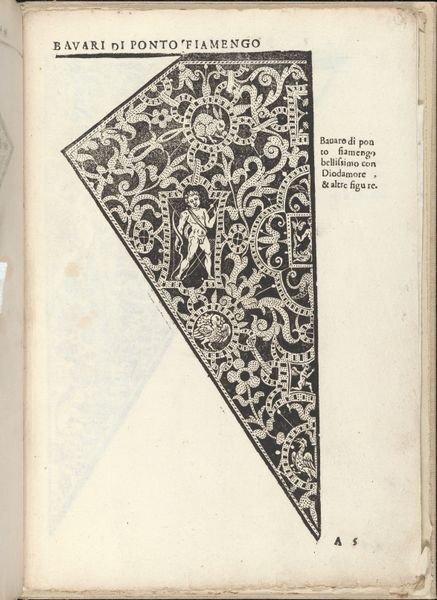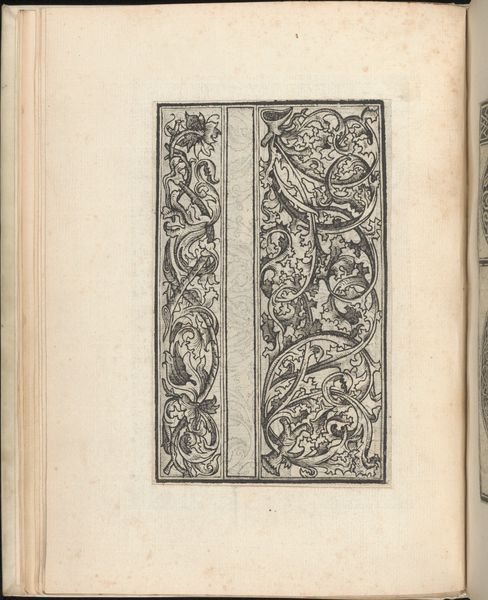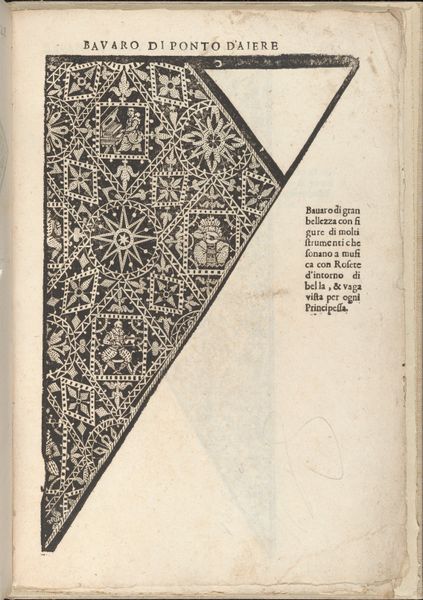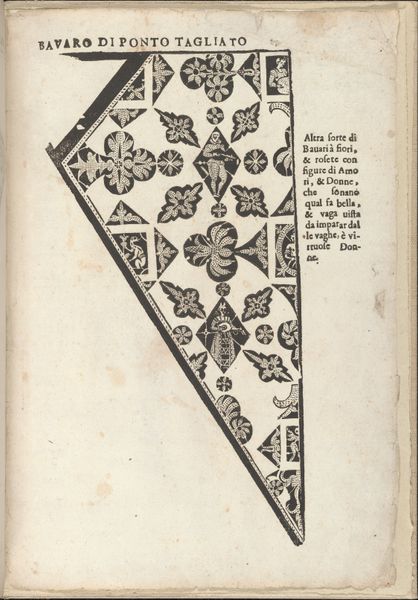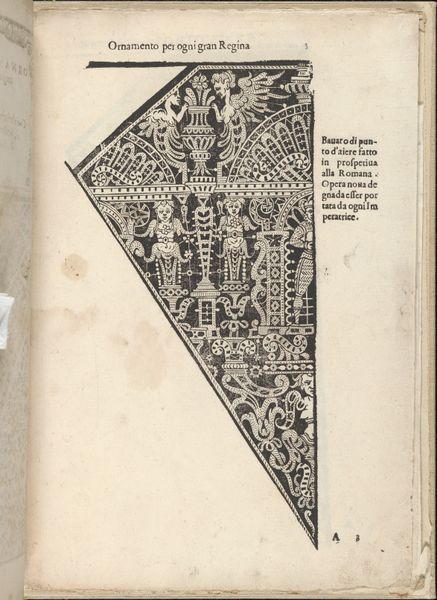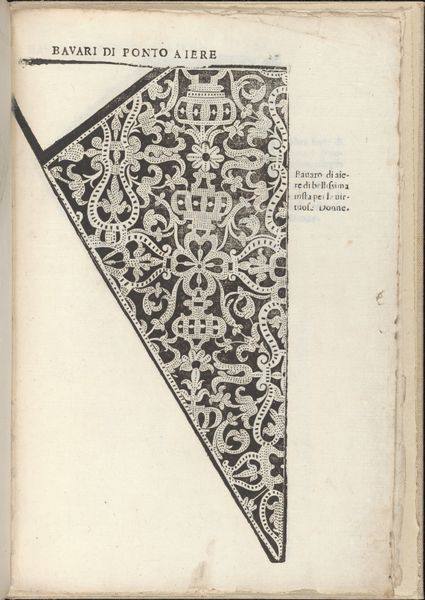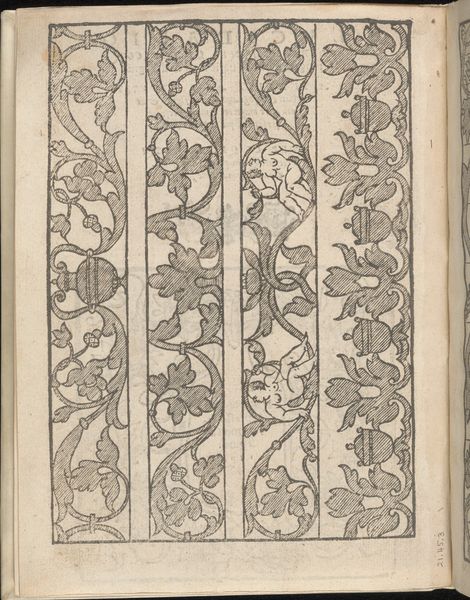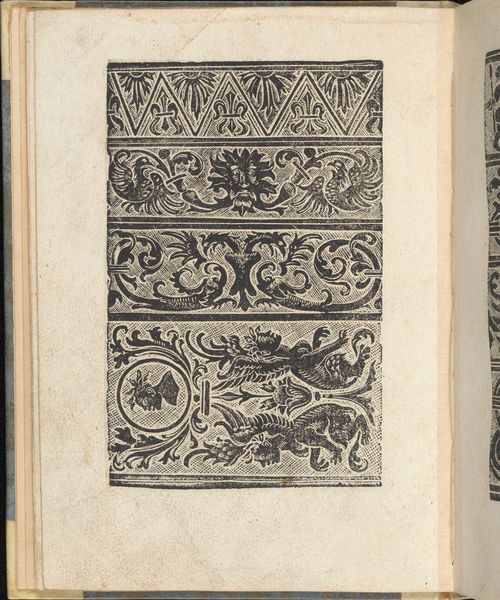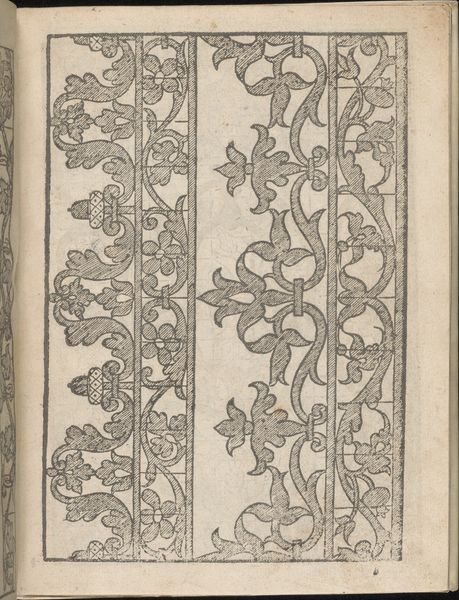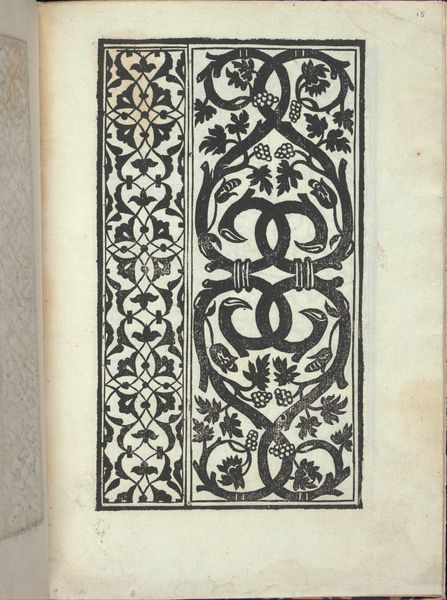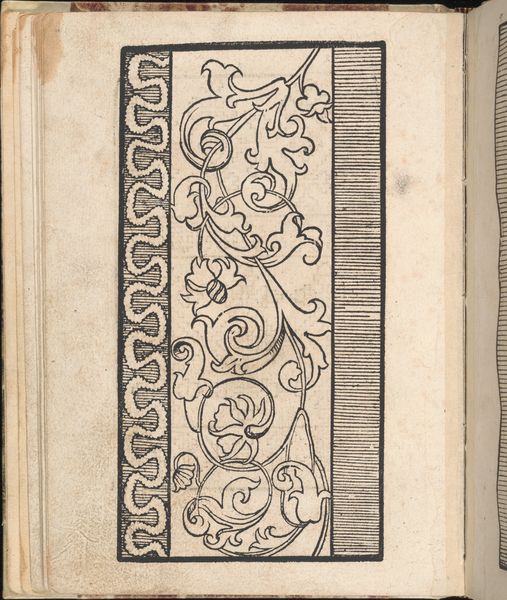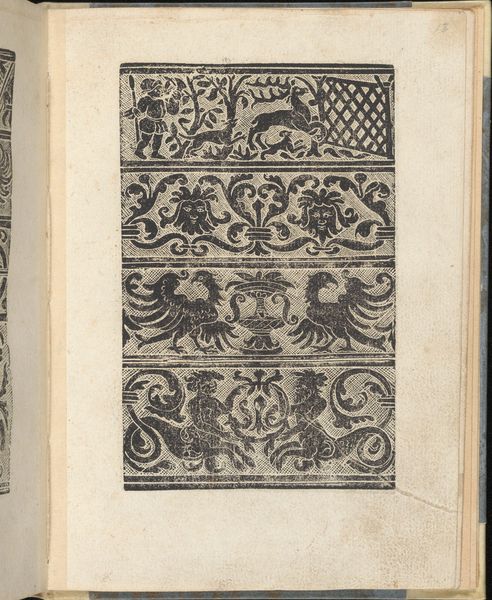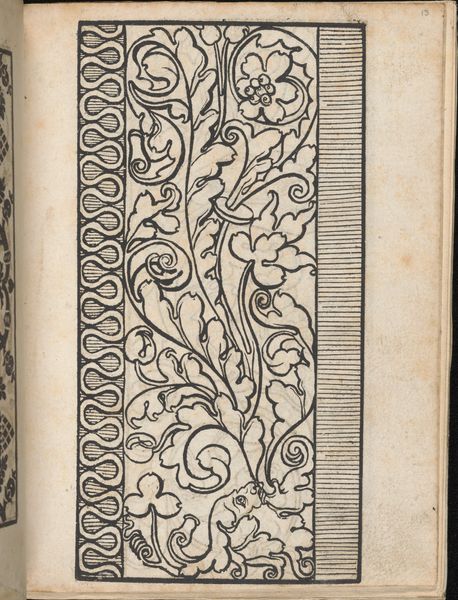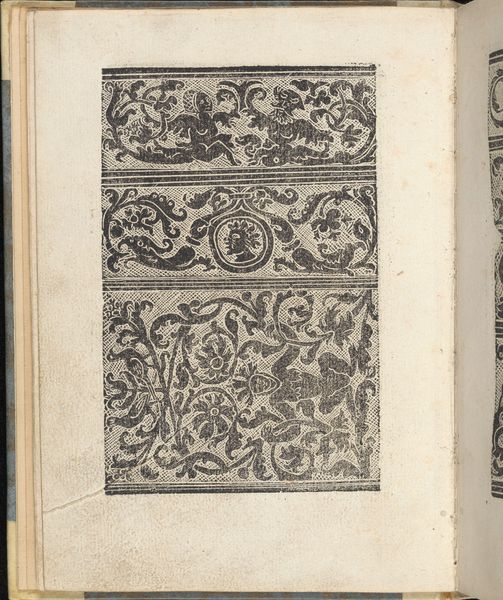
Ornamento nobile...Fatta da Lucretia Romana (Libro V of the Corona), page 14 (recto) 1620
0:00
0:00
drawing, graphic-art, print, intaglio, paper, engraving
#
drawing
#
graphic-art
#
ink paper printed
# print
#
book
#
intaglio
#
sketch book
#
paper
#
11_renaissance
#
personal sketchbook
#
italian-renaissance
#
engraving
Dimensions: Overall: 12 3/16 x 8 1/4 in. (31 x 21 cm)
Copyright: Public Domain
Curator: Before us is a page titled "Ornamento nobile… Fatta da Lucretia Romana," which translates to "Noble Ornament… Made by Lucretia Romana." It's page 14 from Book V of Cesare Vecellio's "Corona," created around 1620. The piece is an intaglio print. Editor: Immediately, I’m drawn to the striking contrast and the intricacy of the design. The shape itself, that almost heraldic triangular form filled with delicate floral patterns, possesses a certain visual gravity. Curator: Yes, the interplay of black and white is fundamental here. The ground of densely inked botanical forms allows the un-inked floral shapes to be fully activated. We can see how printmaking allowed designs to spread widely throughout the fashion industries of the period. Editor: Precisely. Considering the book's broader social context, manuals such as "Corona" gave women a tangible means of agency. The prints offered templates that allowed them to realize forms of personal expression via needlework. Curator: The fact that it credits a female artisan, Lucretia Romana, also says a lot. It speaks volumes about the recognition, albeit partial, women were slowly gaining for their contributions to design. It would be fascinating to determine just who this Lucretia was, and her contribution. Editor: It certainly highlights a pivotal moment. There is a very particular political charge implicit in its presentation to other noble women in order to help them master similar patterns and shapes. Curator: I find myself deeply engaged by how these tightly controlled compositions operate formally to establish specific moods and impressions that are hard to deny. I want to keep examining how this structure guides perception. Editor: From a broader perspective, this single page from "Corona" offers insight into women's participation in Renaissance artistic networks and allows us to think about the democratization of skill made possible through print culture. Curator: Agreed. It is impressive to see the level of detailing within these decorative conventions. Editor: Indeed, thinking about this book as both a collection of forms and as an artifact shaped by a society opens several interesting historical perspectives.
Comments
No comments
Be the first to comment and join the conversation on the ultimate creative platform.
